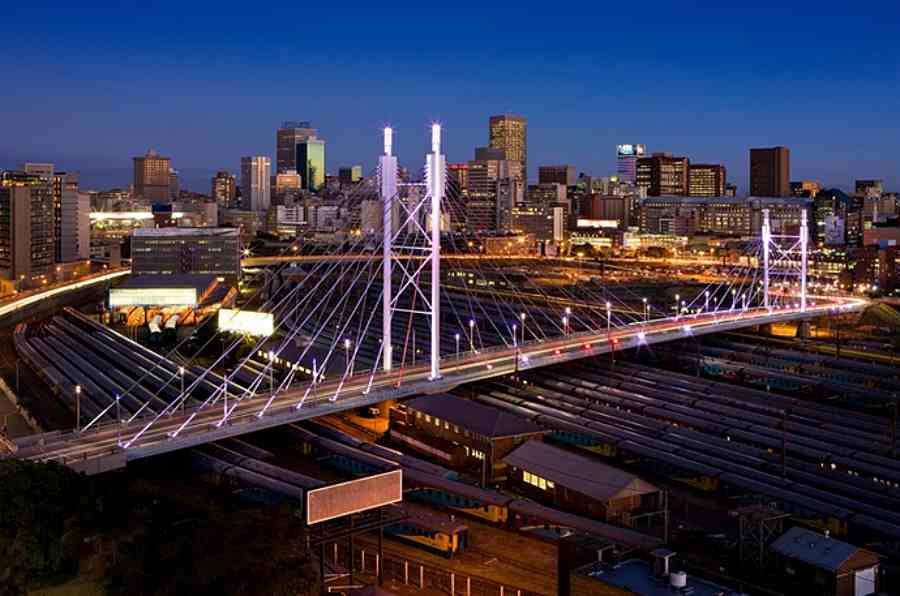Sat 21 October 2023:
South Africa’s census is a vital source of information for policy making, planning and research, and so the Census 2022 findings released last week were eagerly awaited. It offers many insights on everything from marriage rates to language distribution. But as urban scholars and planning practitioners with decades of interest and experience in observing how post-apartheid settlements are being reshaped, our eyes have fallen particularly on what Census 2022 seems to be saying about changes in South Africa’s major towns and cities.
The first batch of results produced a mix of anticipated as well as some surprising findings. This was particularly true for Gauteng province, the country’s economic engine, and its main city, Johannesburg.
If its numbers are to be believed, Census 2022 and preliminary analysis shows astonishingly low population growth figures for Gauteng, and especially for Johannesburg.
With an annual population growth rate of 2.0%, Gauteng is barely growing faster than the national average. It is falling behind the Western Cape at 2.4% and Mpumalanga at 2.3%. The greatest surprise was the figure for Johannesburg: only 0.8%. This means that the city lags behind the country’s other major cities and is no longer a rapidly growing city.
This result is entirely at odds with the popular perception of Johannesburg as a city that is overwhelmed by population growth, battling to keep pace with demand for housing, services and infrastructure.
There is, however, a caveat: the census data may be questionable.
We can’t conclude definitively at this time whether the 0.8% reflects a challenge with data or represents a startling new reality. There is a possibility that it could reflect a deep crisis in South Africa’s premier city – the outcome of a decade or so of weak economic growth and increased social insecurity. Stagnating numbers suggest a loss of appeal, bringing reduced prospects for business and cultural innovation.
In this piece we discuss the dual concerns we have: the implications if indeed the growth of Johannesburg has slowed down significantly, and the veracity of the data.
Is Johannesburg stagnating?
The censuses held in 2001 and 2011 confirmed a widely held view among urban scholars and planners that post-apartheid South Africa was urbanising rapidly. And that this growth was concentrating in the large metropolitan areas, especially in Gauteng province.
This made sense, as Gauteng makes up a full third of the national economy. As the world’s largest producer of gold for over a century, Johannesburg has attracted economic opportunity seekers throughout its history. When the barriers to movement under apartheid came down in the 1990s the pace of rural to urban migration accelerated. Johannesburg’s rapidly changing built environment reflected this, for example in the huge increase in informal dwellings.
But the latest census numbers suggest some dramatic changes could be underway.
If the census figures are correct, Cape Town ( with 4,772,846 people) stood just behind Johannesburg’s total of 4,803,262 in early 2022. But it is reportedly growing at double Johannesburg’s rate, which means that it will already have overtaken Johannesburg as South Africa’s largest city.
The census suggests that the white population of Johannesburg reduced by some 211,000 between 2011 and 2022, the Indian population by 49,000 and the coloured population by 18,000. These racial definitions were introduced under apartheid, and are still in use today to measure post-apartheid population dynamics and development progress. These declines, and the associated increases in the Western Cape province in particular, are confirmed by the state of the property market at both ends.
While this absolute decline is compensated for by the 665,000 rise in the number of black Africans, the surprise is that this represents an increase of only 1.7% per annum, no higher than the background growth rate for the country as a whole. This suggests that even black Africans may be leaving Johannesburg.
This may conceivably take many forms, like elderly people retiring early to rural areas, children being sent “home” to be raised by grandparents, and work seekers looking for economic opportunities elsewhere. It could be middle class “semigration” where residents move to preferred parts of the country instead of emigrating.
Spatial tax data indicates that Johannesburg still offers more jobs than, say, Cape Town. However its economic performance has been poor in recent years, affecting job growth. This may have had effects across the labour market, including whether lower-income households are willing to establish themselves in the city and whether the black middle class remains.
While we are yet to do a systematic analysis, we do note some hot spots of fast growth in small towns and rural parts of more rural provinces. For example Bushbuckridge, an extensive, historically rural settlement in the north of the country bordering the Kruger National Park, has traditionally been understood as a migrant-sending area, but now has a growth rate of well over 3% per annum.
The veracity of the data
Various opinion pieces in the media have raised eyebrows at the exceptionally high undercount of some 31%, meaning that nearly a third of residents have been subsequently shown not to have been counted on census day. This figure is worryingly double that for the last census. The undercount in many countries, both developed and developing, is often less than 5% so the results are arguably much more trustworthy.
There are contextual reasons for this, such as nagging COVID transmission fears and the feelings of insecurity from bouts of public violence. These external factors may have constrained the efficient administration of the census, leading to:
- uncounted foreign nationals
- limited access of census officials to gated estates and suburban homes
- the impossibility of counting the residents of inner-city buildings.
External factors may also have been compounded by internal administrative challenges. There are many anecdotes of people trying, but failing, to submit their census returns via StatsSA’s new online facility.
In theory these problems should have been resolved through post enumeration sampling and adjustment. Nevertheless, questions may legitimately be asked of census officials, and we have done so. We are sceptical, and await further clarity.
Previous census figures have been restated following the first official release. It is conceivable that we may see revisions that correct statistical anomalies.
What next
It is still early days for analysis as we still await the intra-municipal data from Census 2022. Nevertheless, we have identified intriguing, and sometimes worrying, indications of shifting spatial patterns.
At this point, assuming for the moment that the numbers are correctly indicative of directions even if not precise, we can at least hypothesise that the socio-spatial trends revealed in Census 2022 are the outcome of a decade or so of weak economic growth and increased social insecurity in South Africa’s economic hub.
With the job market in large cities and some mining districts unstable or depressed, investment in “rural settlements” may be growing, with members of stretched households returning to these areas after job loss in search of family support and cultural comfort. Previous patterns of urbanisation and agglomeration may not be inexorable.
We can’t conclude definitively at this time whether the 0.8% population growth rate for Johannesburg reflects a challenge with data or represents a startling reality. And while reduced growth may seem to some as a positive trend, it could reflect a deep crisis in South Africa’s premier city. While growth brings pressure, it also offers opportunity.
Authors:
![]()
Philip Harrison
Professor School of Architecture and Planning, University of the Witwatersrand
_________________________________________________________
![]()
Alison Todes
Professor, University of the Witwatersran
_________________________________________________________
![]()
Darlington Mushongera
_________________________________________________________
![]()
Graeme Gotz
______________________________________________________________
FOLLOW INDEPENDENT PRESS:
WhatsApp CHANNEL
https://whatsapp.com/channel/0029VaAtNxX8fewmiFmN7N22
![]()
TWITTER (CLICK HERE)
https://twitter.com/IpIndependent
FACEBOOK (CLICK HERE)
https://web.facebook.com/ipindependent
Think your friends would be interested? Share this story!





